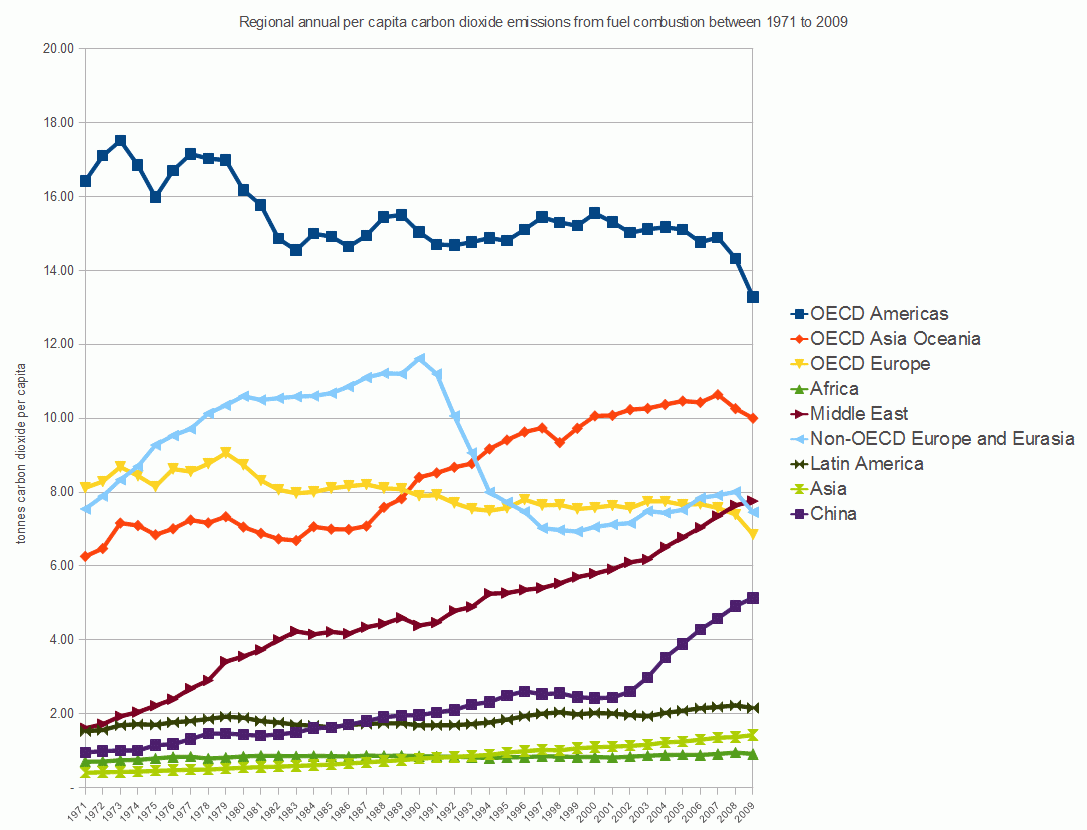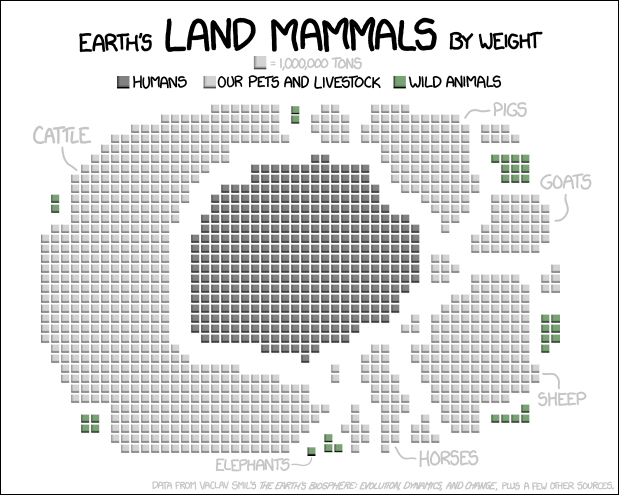Beej67,
It’s important to realize that scenario A1B is not the “business-as-usual” option. The reference to the CO2 per capita is misleading. While Europe and the US have made some efforts to reduce consumption, global emissions continue to rise. A1B involves significant changes that reduce growth in global emissions to the point they peak in 2050 and then begin to decline. A strong balance between renewable and fossil fuels is found globally. It also assumes a much more global community where countries are actively working, including China, India and Russia. Are you saying that without any form of climate policy, CO2 emissions will not just slow down but begin to reduce in 2050, such that 2100 emissions will be close to current levels? I find that rather hard to believe as not too long ago you were saying that it will be rather impossible to get China, India and Russia to reduce their emissions, so we may as well not bother. Now are you saying that because China, India, Russia and the rest of the globe will reduce their emissions voluntarily, so we may as well not bother? I trust that’s not the case and, therefore, I trust that you actually don’t agree with A1B being the “business-as-usual” baseline.
It is incredibly misleading for CATO to use A1B as a base line. It really makes no sense whatsoever; CATO is comparing the
additional effect of
further localized reductions
on top of significant global reductions. Of course the difference will appear to be insignificant. It’s like predicting weight gain of a person in 10 years who eats nothing but McDonalds by comparing a carb and fat free diet against a baseline diet of significantly reduced carb and fat intake and then because the difference is negligible concluding that the person should continue with their McDonalds-only diet.
The % reduction in the calculator is based on reductions from a 2005 baseline occurring by 2050. How quickly the reduction takes place, is unknown, however, the full reduction is not realized until 2050 so to compare 2050 temperatures is misleading. So let’s use 2100 as the comparison. However, even this has its problems as A1B global emissions
reduce from 2050 to 2100 whereas the CATO calculator holds emissions at the 2050 level. The more you look into this, the sketchier to becomes.
The closest thing to a business-as-usual scenario, and most appropriate “base line”, is A2 or A1FI. Well-known skeptic Richard Tol
even agrees that A2 is the most realistic base line future scenario, so let’s go with that. From
AR4 WG1 SPM, the best estimate temperature change in 2090-2099 for A1B is 2.8 deg C (1.7 to 4.4 deg C) and for A2 is 3.4 deg C (2.0 to 5.4 deg C). This shows that there is a significant difference depending on the which baseline you select and that difference only gets bigger after 2100.
Beyond the issue with the base line (which to me is a major issue), there is still the question of how the difference is calculated. Yes, they used MAGICC to calculate but there is still plenty of opportunity to twist the values around but they provide very few details. Given the obvious bias in the baseline selection and the history of misinformation from CATO, I’m very skeptical that the analysis was done while trying to minimize any biases.
And beej, only if I can get the second round! I feel we are both conservationalists with much in common, I’d just like to convince you that CO2 emission reduction is also a very important part of conservation haha! You are absolutely right and I do need to acknowledge that my tone can go from strident to downright disrespectful at times (although it’s rather give-and-take). If I am pushing for a more rational discussion, it starts with me engaging with a tone more conducive to a positive dialogue.
![[ponder] [ponder] [ponder]](/data/assets/smilies/ponder.gif)
![[ponder] [ponder] [ponder]](/data/assets/smilies/ponder.gif)






![[cow] [cow] [cow]](/data/assets/smilies/cow.gif)